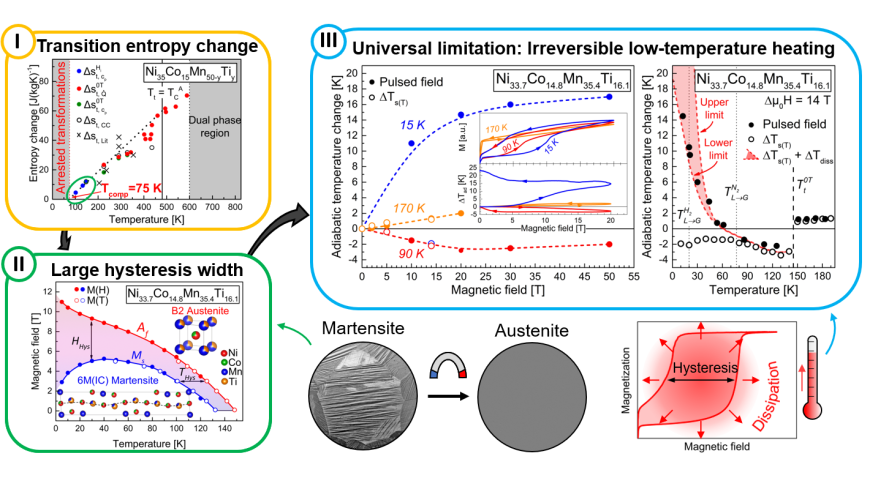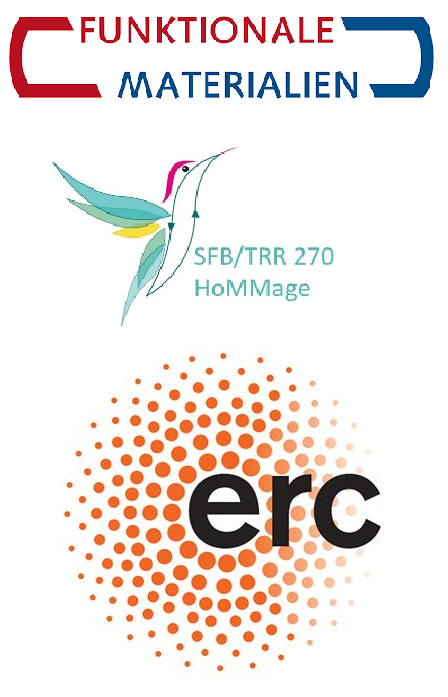Dissipation losses limiting first-order phase transition materials in cryogenic caloric cooling: A case study on all-d-metal Ni(-Co)-Mn-Ti Heusler alloys
Newpublication
2023/01/23

B. Beckmann, D. Koch, L. Pfeuffer, T. Gottschall, A. Taubel, E. Adabifiroozjaei, O. N. Miroshkina, S. Riegg, T. Niehoff, N. A. Kani, M. E. Gruner, L. Molina-Luna, K. P. Skokov and O. Gutfleisch
Ni-Mn-based Heusler alloys, in particular all-d-metal Ni(-Co)-Mn-Ti, are highly promising materials for energy-efficient solid-state refrigeration as large multicaloric effects can be achieved across their magnetostructural martensitic transformation. However, no comprehensive study on the crucially important transition entropy change ∆s_t exists so far for Ni(-Co)-Mn-Ti. Here, we present a systematic study analyzing the composition and temperature dependence of ∆s_t. Our results reveal a substantial structural entropy change contribution of approximately 65 J(kgK)-1, which is compensated at lower temperatures by an increasingly negative entropy change associated with the magnetic subsystem. This leads to compensation temperatures T_comp of 75 K and 300 K in Ni35Co15Mn50-yTiy and Ni33Co17Mn50-yTiy, respectively, below which the martensitic transformations are arrested. In addition, we simultaneously measured the responses of the magnetic, structural and electronic subsystems to the temperature- and field-induced martensitic transformation near T_comp, showing an abnormal increase of hysteresis and consequently dissipation energy at cryogenic temperatures. Simultaneous measurements of magnetization and adiabatic temperature change ∆T_ad in pulsed magnetic fields reveal a change in sign of ∆T_ad and a substantial positive and irreversible ∆T_ad up to 15 K as a consequence of increased dissipation losses and decreased heat capacity. Most importantly, this phenomenon is universal, it applies to any first-order material with non-negligible hysteresis and any stimulus, effectively limiting the utilization of their caloric effects for gas liquefaction at cryogenic temperatures.
Acta Materialia 246, 118695, (2023).



